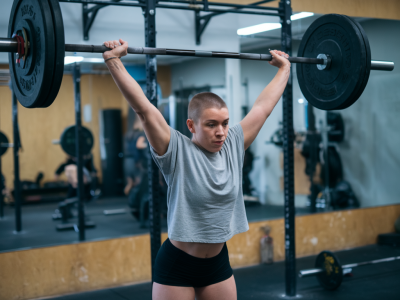
Foam rolling has become a buzzword in the fitness community, and honestly, for good reason. Whether you’ve seen people wielding foam rollers at your local gym or perhaps heard about its role in post-workout recovery, you might be wondering, "What’s the deal with foam rolling? Is it really that effective?" Trust me, I’ve asked myself the same question before incorporating it into my fitness routine. Now, having experienced its benefits firsthand, I’m excited to dive into the science behind foam rolling and why it could revolutionize the way you recover after training.
What is Foam Rolling?
Foam rolling, also known as self-myofascial release (SMR), involves using a foam roller to apply pressure to sore or tight muscles. Think of it as giving yourself a rejuvenating mini-massage after an intense workout. The foam roller helps target the fascia, a layer of connective tissue that surrounds your muscles. Over time, stress, overtraining, and inactivity can cause the fascia to tighten, leading to discomfort and limited flexibility. Foam rolling works to release this tension, improving mobility and reducing muscle soreness.
There are various types of foam rollers available in the market today, ranging from smooth rollers for beginners to textured ones like the TriggerPoint GRID Foam Roller for a deeper massage. Personally, I’m a huge fan of the textured rollers—they hurt so good but are worth every grimace because the results are unmatched!
The Science Behind Foam Rolling
The benefits of foam rolling aren’t just anecdotal; there’s actual science to back it up. When you use a foam roller, you’re essentially stimulating your nervous system and increasing blood flow to your muscles. This boost in circulation allows your body to transport oxygen and nutrients more effectively, speeding up the recovery process.
One study published in the Journal of Athletic Training found that foam rolling significantly reduces delayed-onset muscle soreness (DOMS), which is that familiar stiffness you feel 24–48 hours after a tough workout. Moreover, research has shown that foam rolling improves range of motion without negatively affecting performance—perfect for those who want to enhance their flexibility without sacrificing strength or speed.
When Should You Foam Roll?
A question I get asked a lot is, “When is the best time to foam roll?” Honestly, there’s no wrong answer—it depends on your goals:
- Before a workout: Foam rolling pre-workout can help loosen up tight areas, increase circulation, and prime your muscles for activity. I like to focus on my calves, quads, and hamstrings before hitting the treadmill or lifting weights.
- After a workout: Post-workout rolling is where the magic happens for muscle recovery. It helps break down lactic acid build-up and reduces soreness, so you can bounce back faster for your next session.
- On rest days: Recovery days are perfect for longer foam rolling sessions to focus on deeper tension and overall relaxation. Combine it with some yoga or deep breathing for the ultimate recovery experience.
How to Get Started: Best Practices
Using a foam roller might look intuitive, but there’s a technique to it. Here are some tips to make your foam rolling sessions effective:
- Start slow: Roll over the muscle gently at first to identify any tight or tender spots. Trust me, you’ll know when you hit one!
- Pause on tight areas: Once you find a knot or a particularly sore area, hold the pressure there for 20–30 seconds. This helps release tension more effectively.
- Avoid sensitive areas: Foam rolling your lower back or directly on joints can do more harm than good. Stick to muscles like your quads, calves, hamstrings, IT band, and upper back.
- Breathe: It’s natural to tense up when foam rolling feels uncomfortable, but focusing on deep, controlled breathing can help you relax and release tightness more efficiently.
Foam Rolling Myths: Let’s Address Them
While foam rolling is getting more popular, some misconceptions still circulate. Let me bust a few myths:
- "Foam rolling is only for athletes." Nope! It’s beneficial for everyone—from desk workers dealing with stiff backs to casual joggers recovering from their runs.
- "Foam rolling should hurt a lot to work." False. Yes, you might feel some discomfort when hitting tense areas, but sharp pain is a sign you’re pressing too hard. Ease up and let your body adjust.
- "Foam rolling replaces stretching." Not quite. While foam rolling enhances flexibility, it works best when combined with regular stretching routines.
My Personal Experience with Foam Rolling
I’ll admit, the first time I tried foam rolling, I was skeptical. I’d just come back from a grueling leg day at the gym, and my muscles were already threatening rebellion. I spent 10 minutes rolling out my quads and calves, and let me tell you—it was a game-changer! By the next morning, the usual post-workout soreness was noticeably reduced. Over time, I noticed other benefits too, like increased flexibility in my hamstrings and fewer random aches from sitting too long at my desk.
These days, my foam roller is a non-negotiable part of my fitness toolkit. I even keep a compact roller handy for travel—I can’t count the number of tight airplane seats it’s saved me from!
Tools to Get You Started
If you’re ready to give foam rolling a shot, here are some products I recommend:
- TriggerPoint GRID Foam Roller: Perfect for beginners and intermediate users, thanks to its multi-density surface.
- Theragun Wave Roller: A high-tech, vibrating foam roller for targeted relief (pricey, but worth the splurge!).
- AmazonBasics High-Density Foam Roller: A budget-friendly option for those just dipping their toes into foam rolling.
Remember, foam rolling is about consistency. Even spending just 5–10 minutes a day can make a difference in the way your body feels and recovers. So, roll it out, and let me know how it goes—I’d love to hear your experiences!

